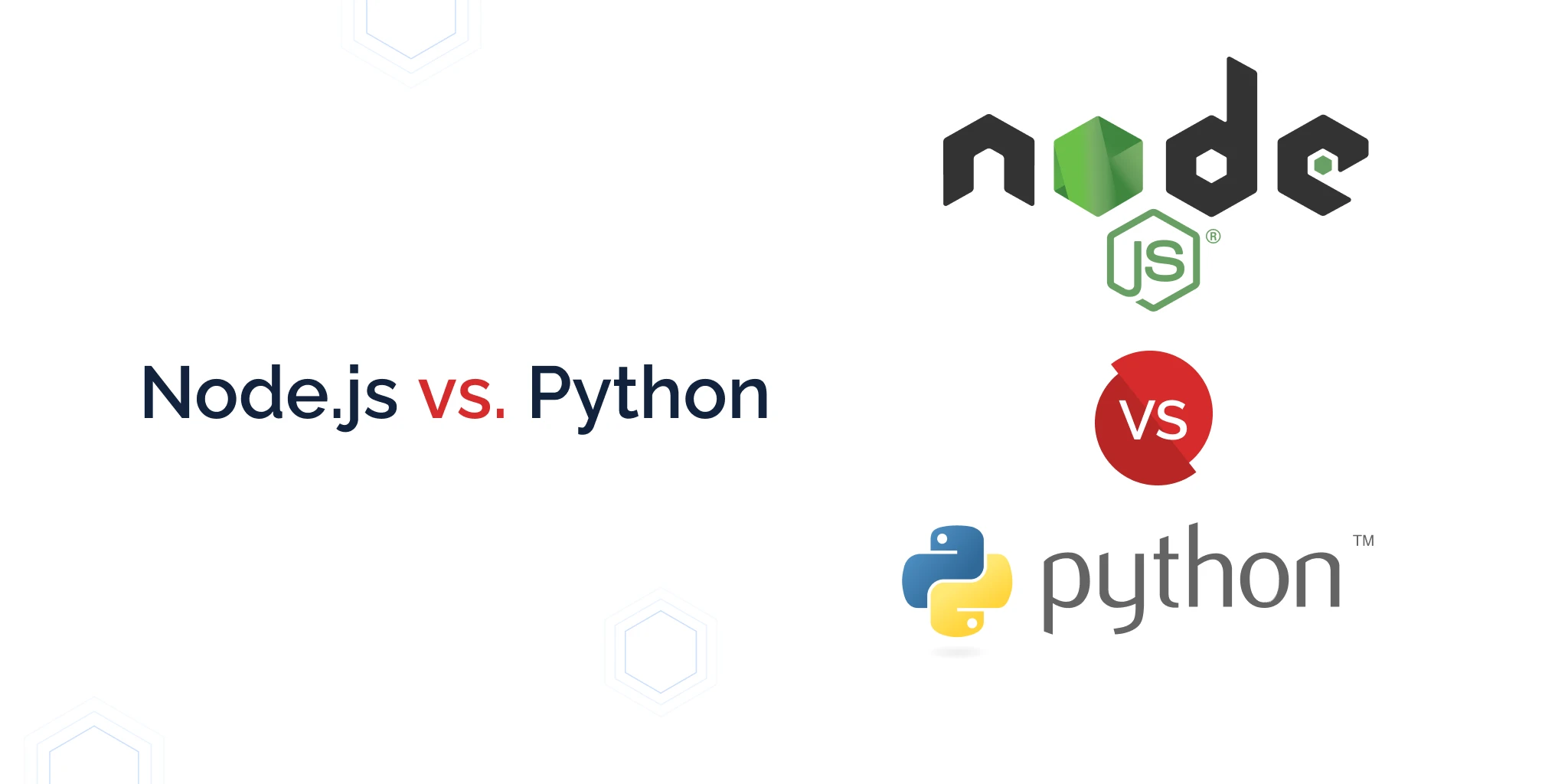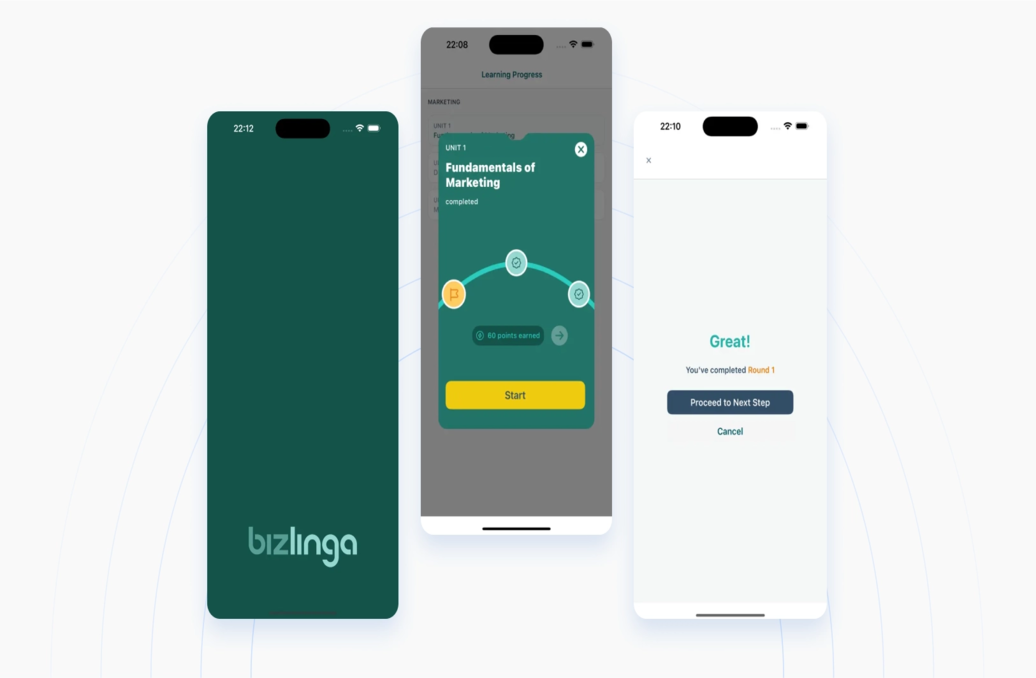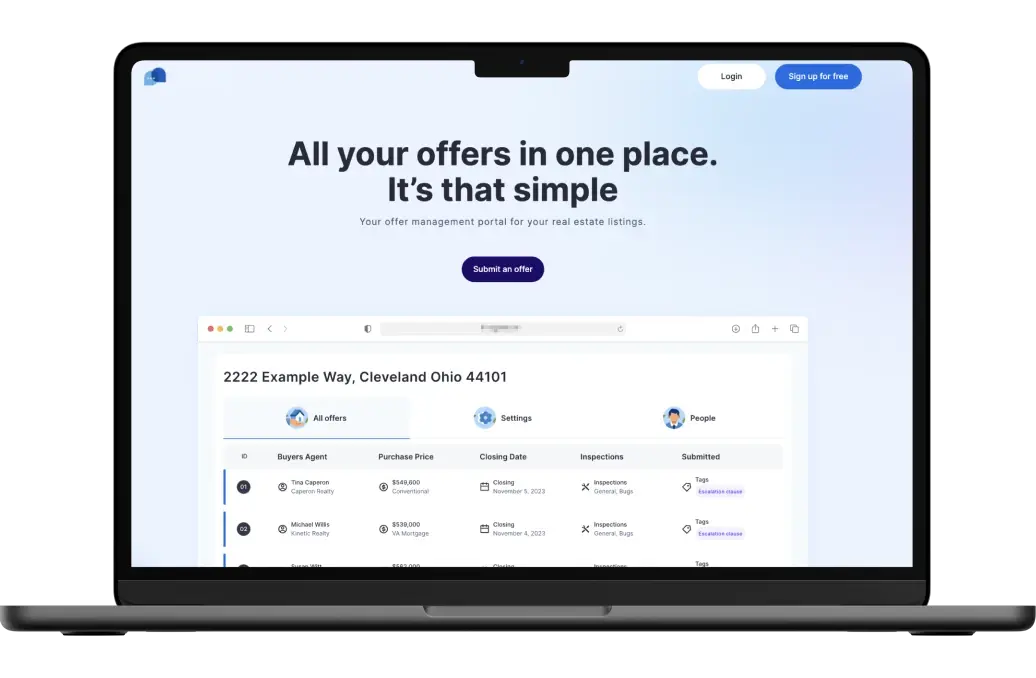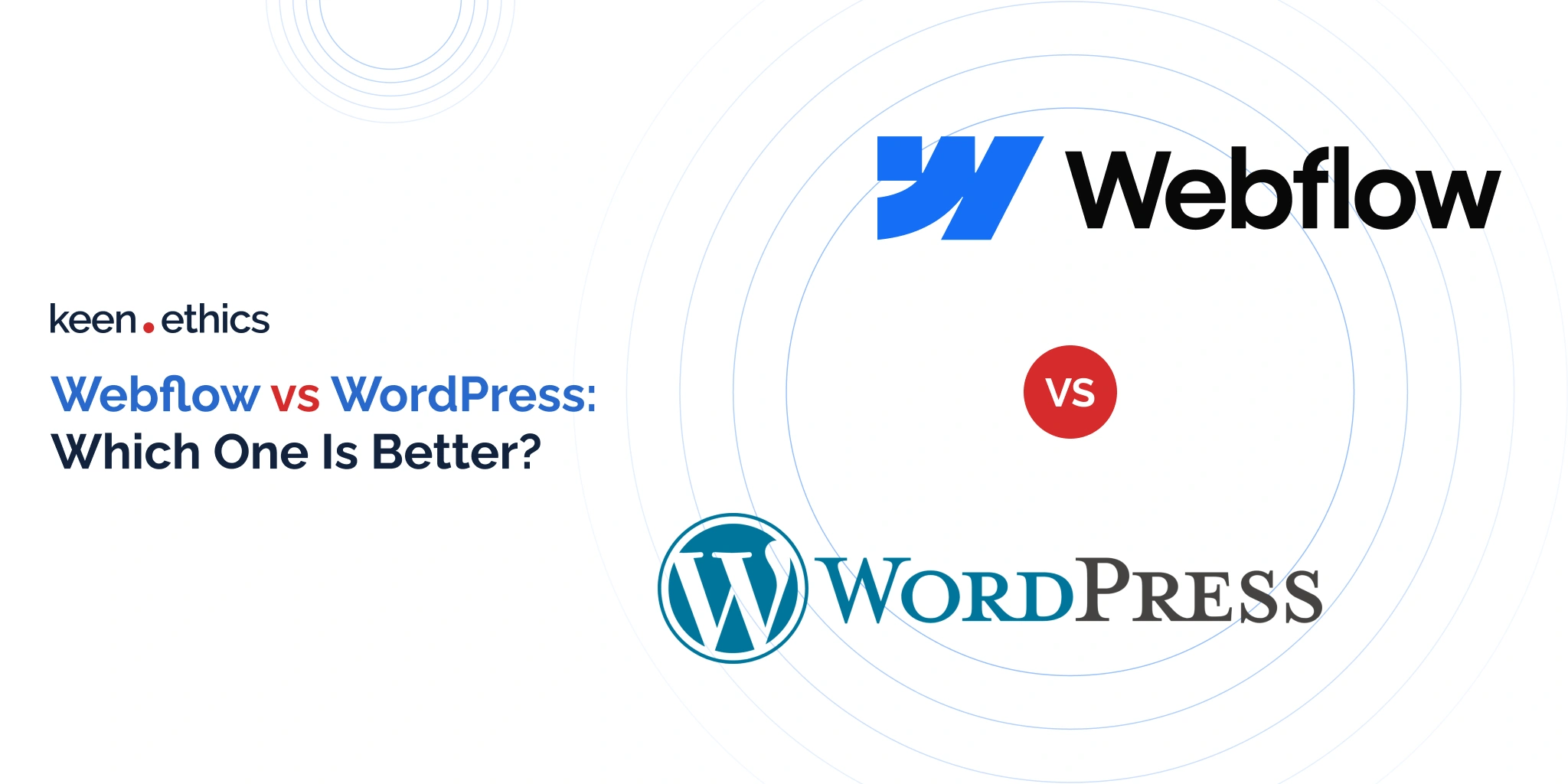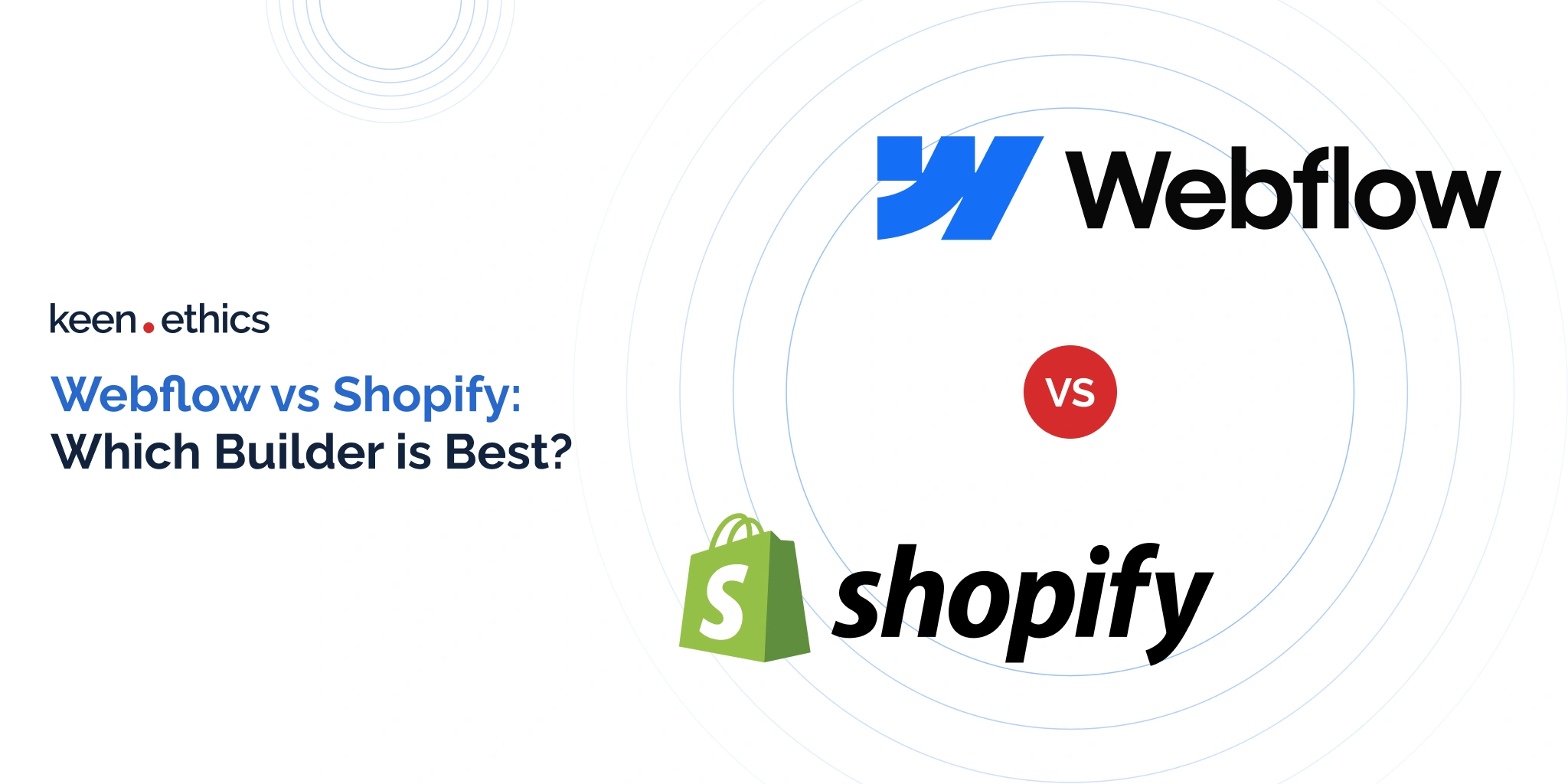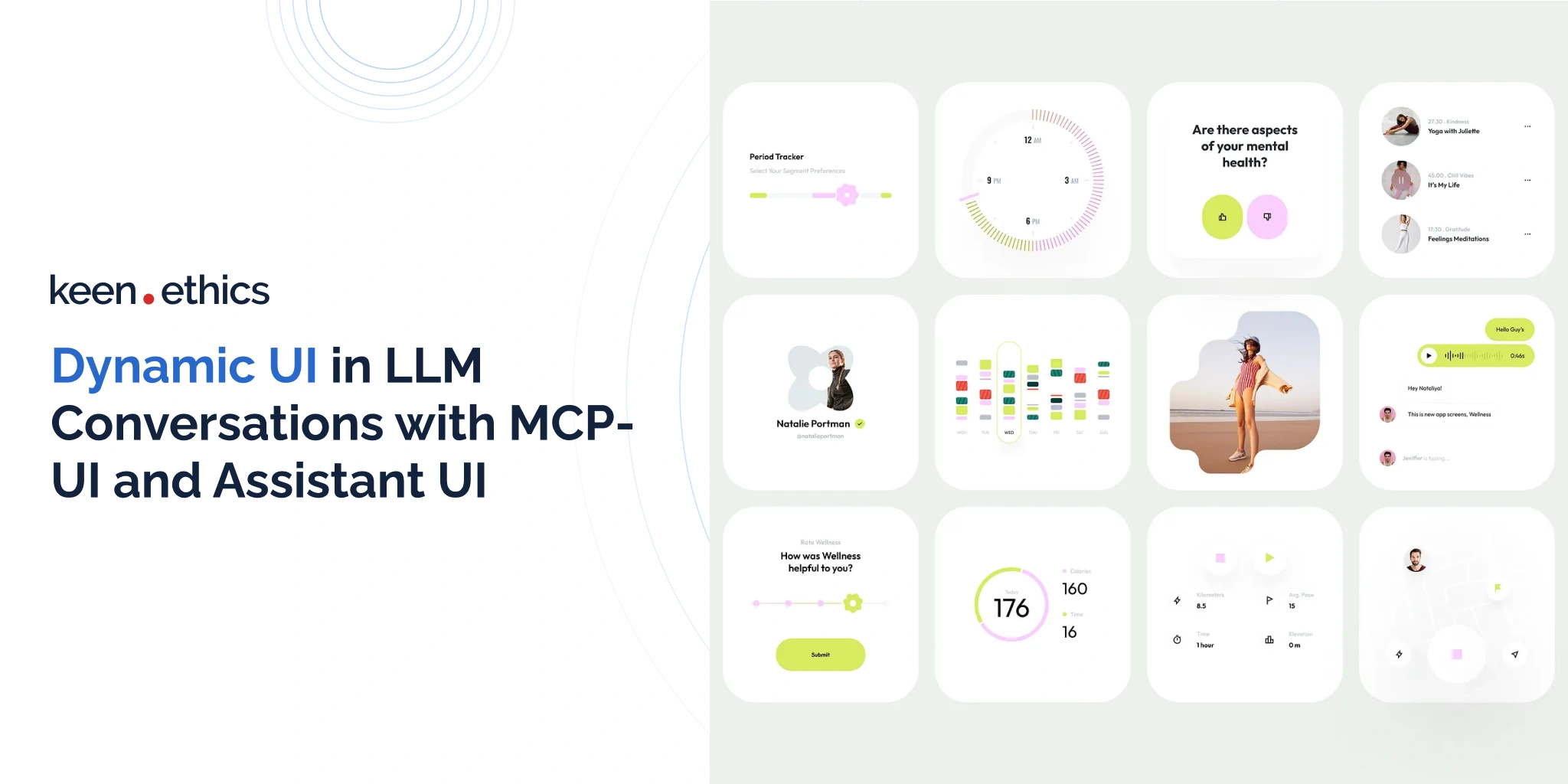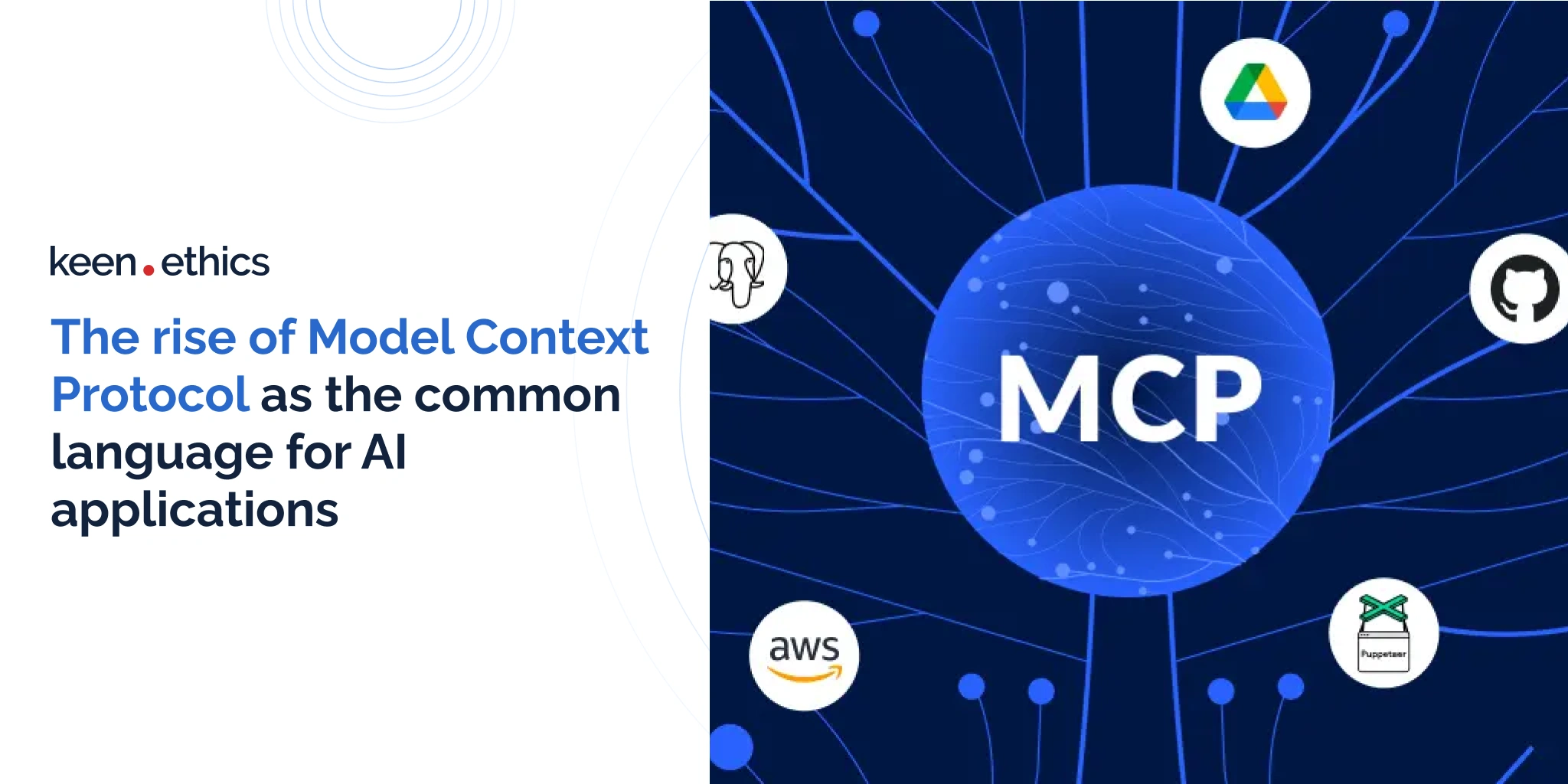We take courage in both hands and claim that one of these technologies is winning it. Which one?
Node.js and Python are among the most popular technologies for backend development. The rule has it that there is no better or worse programming language, and that everything depends on the preferences of a particular developer. Some languages are better for real-time applications on the web. Others are more powerful for various types of scientific applications. Yet, in this article, we’ll take our courage in both hands and claim that one of these technologies – Node.js vs. Python – is winning it, being a more ideal language for development. Which one? Let’s see.
The comparison criteria that we’re going to consider are:
- Architecture
- Speed
- Syntax
- Scalability
- Extensibility
- Libraries & Dev tools
- Universality
- Learning curve
- Community
- Apps it’s best suitable for
Python vs NodeJS: Brief overview
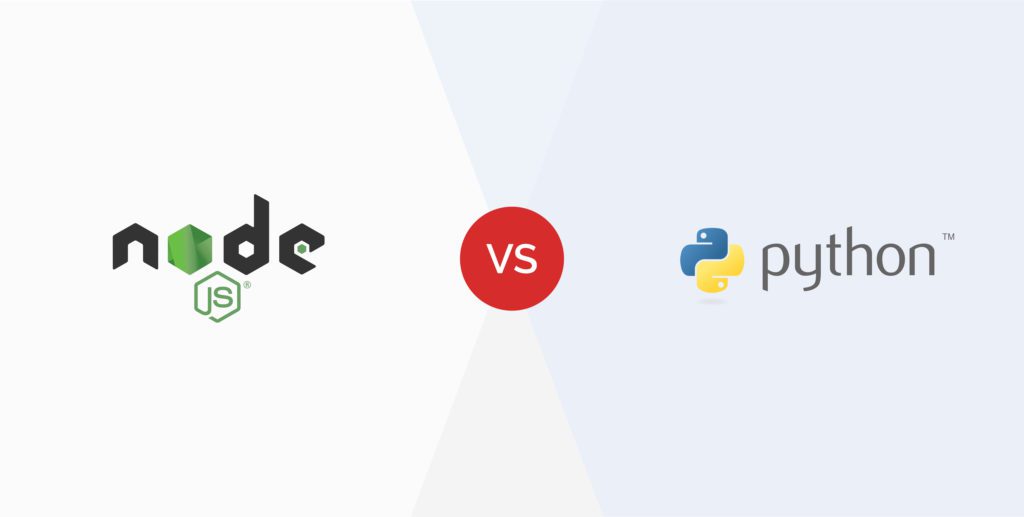
Node.js
NodeJS isn’t a programming language but an open-sourced runtime environment for JavaScript, an accessible language for scripting primarily used in the browser environments. It was initially released in 2009 by Ryan Dahl. The latest version – NodeJS 21 – was released in October 2023.
The most outstanding thing about Node.js app development is that it’s based on Google’s V8 engine. V8 is a powerful engine developed by Google that functions as a virtual machine. It was primarily programmed in C++ to be feature-complete: the platform has interpreters, compilers, and optimizers that ensure great processing speed. Its main role is to transform JavaScript functions directly into machine code to render any type of complex web project. Engineered for integration with Google Chrome, V8 stands out for its remarkable speed and the continuous improvements made to its performance.
Python
Python is a popular open-sourced programming language. It was first released in 1991 by Guido van Rossum. The latest version is Python 3.11, and it was launched in October 2022.
Python mainly runs on Google’s App Engine. Also developed by Google, the App Engine allows developing web apps with Python and benefit from numerous popular libraries and tools that the best Python developers use, enjoying efficient code sharing.
Pros and Cons of Using Node.js or Python
Wonder, what’s the benefit of using either Node.js or Python? Let’s figure out what technology might work best for you.
NodeJS
There are at least four massive benefits of Node.js:
- decrease in response time
- the use of JavaScript as a language for scripting
- increase in app performance
- and reduction in development costs
It looks like those benefits explain the popularity of Node.js, isn’t it? In brief, this backend platform has become an actual trend which will evolve even more swiftly in tasks like mobile development.
On top of that, Stack Overflow Research concluded that Node.js remains the leader among other frameworks related to backend technology. Such statistics prove that Node.js is worth learning if you want to engage in the development of web and mobile applications.
Yet, there are some tools in the npm registry that might not be properly documented.
Python
As Statista points out, Python is one of the most widely used programming languages. But why is it so? Is it truly an ideal programming language? Let’s think it over.
Among the prime benefits of Python, it’s necessary to highlight the following ones:
- simplicity
- multiple spots for library hosting
- AI development and machine learning opportunities
Yet, there is a HUGE drawback of Python that’s necessary to pay attention to from the start. If you prioritize high speed, Python won’t be the case since it takes more time to handle certain operations than other languages. It’s generally not great for CPU-bound tasks of various kinds, making it a suboptimal choice for large-scale enterprise apps.
Below, we’ll analyze two technologies in detail.
Architecture in Node.js vs. Python

NodeJS
Node.js is designed as an event-driven environment, which enables asynchronous input/output. A certain process is called as soon as the respective event occurs, meaning no process blocks the thread. The event-driven architecture of Node.js is an ideal choice for developing chat apps and web games.
Python
By contrast, Python isn’t designed that way. It does have the possibility of building an asynchronous and event-driven app with the help of special tools. Such a module as asyncio makes it possible to write asynchronous code in Python as it would be done in Node.js. Yet, this library isn’t built in most Python frameworks; in any case, it requires some additional hustle.
The event-driven architecture brings Node.js the first point.
Node.js vs. Python: 1 – 0
NodeJS vs. Python: Speed

NodeJS
Firstly, since JavaScript code in Node.js is interpreted with the V8 engine, which Google invests heavily in, the performance of this framework is remarkable for backend applications. Secondly, Node.js executes the code outside the web browser, making the app more resource-efficient and performs better. This also gives a possibility to use features that can’t be used in a browser, such as TCP sockets. Thirdly, the event-driven non-blocking architecture enables several requests to be processed simultaneously, accelerating code execution. Finally, single module caching is enabled in Node.js, which reduces app loading time and makes it more responsive.
Python
Both Python and JavaScript are interpreted languages, and they’re generally slower than compiled languages, such as Java, which can be rightfully called a multipurpose programming language. Yet, Python still loses to Node.js. Unlike Node.js, Python is single-flow, and the requests are processed much slower. So, Python isn’t the best choice for apps that prioritize speed and performance or involve numerous complex calculations. Therefore, Python web apps are slower than Node.js web apps.
Since Node.js is faster, it wins a point regarding Node JS vs Python performance and speed.
Node.js vs. Python: 2 – 0
Syntax in Node.js vs. Python
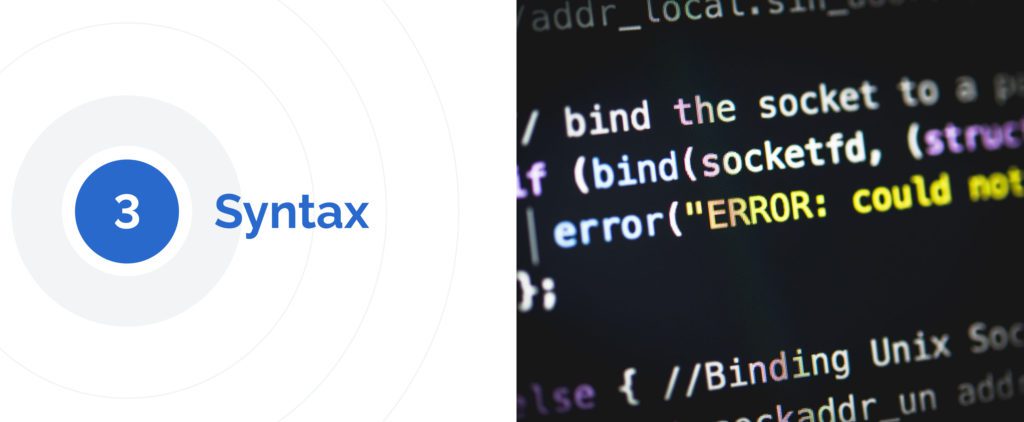
NodeJS
Syntax, for the most part, is a matter of personal preference. If we start saying that one is better and the other is worse, we’ll probably face a lot of criticism and skepticism from our readers who love one popular language or the other. Node.js syntax is quite similar to that of browser’s JavaScript. Therefore, if you’re well-familiar with JavaScript, you aren’t going to have any difficulties with Node.js unified stack development.
Python
Python’s syntax is often called the greatest advantage of it. While coding in Python, software developers need to write fewer code lines than if they were coding in Node.js. The syntax is very simple, and it’s free of curly brackets. Respectively, the code is much easier to read and debug. In fact, Python code is so readable that the clients with limited technical background can understand it. Thus, the language is great if you’re willing to create small-scale desktop applications for personal use. But again, it depends on personal preferences.
Only because Python syntax is easier to understand and to learn for beginners than the syntax of Node.js, Python wins a point here.
Node.js vs. Python: 2 – 1
Scalability in Node.js vs. Python

NodeJS
Node.js development spares you the need to create a large monolithic core. You create a set of microservices and modules instead, and each of them will communicate with a lightweight mechanism and run its own process. You can easily add an extra microservice and module, which makes the development process flexible. You can easily scale a Node.js web app both horizontally and vertically. To scale it horizontally, you add new nodes to your system. To scale it vertically, you add extra resources to your nodes. Also, in terms of typing, in Node.js, you have more options than in Python. You can use weakly-typed JavaScript or strongly-typed TypeScript.
Python
For the app to be scalable, multithreading needs to be enabled. Yet, Python doesn’t support multithreading because it uses Global Interpreter Lock (GIL). Although Python has libs for multithreading, it’s not “true” multithreading. Even if you have multiple threads, GIL doesn’t let Python interpreter perform a few tasks simultaneously but makes it run only one thread at a time. Python has to use GIL even though it negatively affects performance because Python’s memory management isn’t thread-safe. Furthermore, Python is dynamically-typed. Yet, dynamically-typed languages aren’t suitable for large projects with a growing development team. When growing, the system gradually becomes excessively complex and difficult to maintain.
Evidently, Python loses to Node.js in terms of scalability.
Node.js vs. Python: 3 – 1
NodeJS vs. Python: Extensibility

NodeJS
Node.js can be easily customized, extended, and integrated with various tools. It can be extended with the help of built-in APIs for developing HTTP or DNS servers. It can be integrated with Babel – a JS compiler, which will facilitate front-end development with old versions of Node or browser. Jasmine will be helpful for unit-testing, and Log.io will be helpful for project monitoring and troubleshooting. For data migration, process management, and module bundling, you can use Migrat, PM2, and Webpack. Moreover, Node.js can be extended with such frameworks as Express, Hapi, Meteor, Koa, Fastify, Nest, Restify, and others.
Python
Python was introduced in 1991, and throughout its history, a lot of development tools and frameworks have been created. For example, Python can be integrated with a popular code editor Sublime Text, which offers some additional editing features and syntax extensions. For test automation, there is Robot Framework. There are also a few powerful web development frameworks, such as Django, Flask, Pyramid, Web2Py, or CherryPy. In short, you get all the benefits of using a popular programming language.
So, both networks are easily extensible, and both win a point. While Node.js has a potentially larger community, Python and its platforms typically have longer histories and more dedicated developers.
So, both networks are easily extensible, and both win a point.
Node.js vs. Python: 4 – 2
Libraries & Dev Tools in Node.js vs. Python
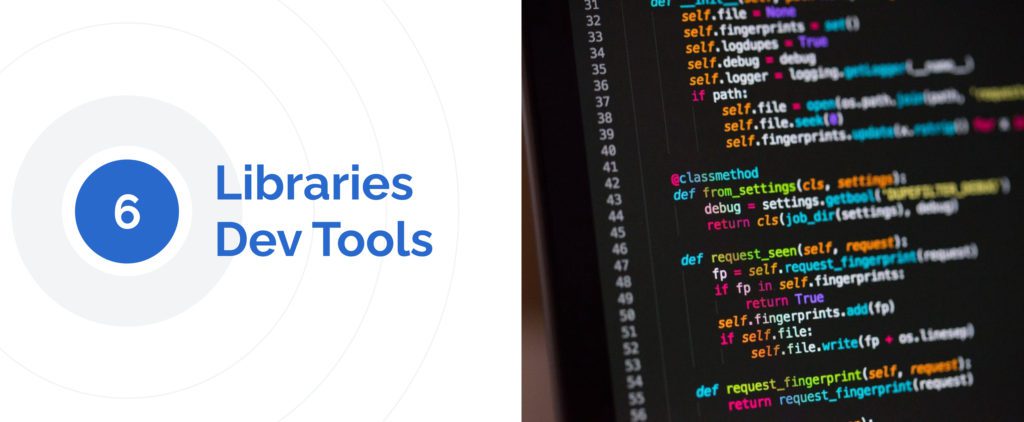
NodeJS
In Node.js, libraries and packages are managed by NPM – the Node Package Manager. It’s one of the biggest repositories of software libraries. NPM is fast, well-documented, and easy to learn to work with. It covers almost every app development project need imaginable.
Python
In Python, the management of libraries and packages is ensured by Pip, which stands for “Pip installs Python”. Pip is fast, reliable, and understandable, so developers find it easy to learn to work with it for all types of everyday work.
Node.js vs. Python: 5 – 3
NodeJS vs. Python: Universality

NodeJS
Node.js is predominantly used for the backend development of web applications and some mobile app development via extensions and platforms like Express and React. Yet, for frontend development, you use JavaScript so that both frontend and backend share the same programming language. With Node.js, you can develop not only web apps but also desktop and hybrid mobile apps, cloud, and IoT solutions. Moreover, it’s cross-platform, meaning that a developer can create a single desktop app that will work on Windows, Linux, and Mac. Such universality is a great way to reduce development costs, since one team of developers can take care of everything.
Python
Python is full stack, so it can be used both for backend and frontend development due to its flexible syntax. Similarly to Node.js, Python is cross-platform, so, for example, a Python program written on Mac will run on Linux. Both Mac and Linux have Python pre-installed, which makes it a popular choice for development there, but on Windows, you should install the Python interpreter yourself. Yet, while Python is great for web and desktop development, it’s weak at mobile computing. Therefore, mobile apps aren’t generally written in Python. As for IoT and AI solutions, the popularity of Python as a language for writing is growing.
In terms of universality, Node.js and Python go nose to nose. It would be fair to grant each with a point.
Node.js vs. Python: 6 – 4
Learning curve in Node.js vs. Python

NodeJS
Node.js is JavaScript-based and can be easily learned by beginning developers. As soon as you have some knowledge of JavaScript, mastering Node.js shouldn’t be a problem. Installing Node.js is quite simple. Yet, Node.js introduces some advanced topics, and for example, it may be difficult to understand its event-driven architecture or asynchronous nature at once. Indeed, the event-driven architecture has an outstanding impact on the app performance, but the developers need some time to master it.
Nonetheless, the entry threshold of Node.js is still quite low. At the same time, if a programming language has a low entry threshold, there might be a lot of unprofessional developers. For you as a developer, it poses a threat of being unable to find a job in such a busy employment market. However, if you’re confident and have a great portfolio, you can easily solve this problem. For you as a business owner, it poses a threat of hiring low-quality specialists. Yet, you also can solve it by hiring a trusted software development agency.
Python
If you don’t know JavaScript and you have to choose what to learn – Python or Node.js you should probably start with the former. Python may be easier to learn because its syntax is simple and compact. Usually, writing a certain function in Python will take fewer lines of code than writing this very function in Node.js. Yet, it isn’t always true because the length of your code greatly depends on your programming style and model. Furthermore, you will like it since JavaScript has no curly brackets.
Learning Python also teaches you how to indent the code properly since this language is indentation and whitespace sensitive. The same goes for Node.js, however. The problem with indentation and whitespace sensitive languages is that a single indentation mistake or a misplaced bracket can break your code for no obvious reason. A new developer may find it hard to troubleshoot such an issue. Installing Python is more difficult than installing Node.js. If you have Linux or Windows, you should be able to install Python with no problem. Yet, if you use macOS, you will see you have Python 2.0 preinstalled, but you can’t use it not to interfere with system libraries. Instead, you download and use another version, and when configuring the development environment, don’t forget to select the proper one.
Both Python and Node.js are easy to learn. You can’t answer objectively which one is simpler because it’s also a matter of personal preference. So, once again both technologies receive a point.
Node.js vs. Python: 7 – 5
NodeJS vs. Python: Community

NodeJS
Node.js community is large and active. It’s a mature open-sourced language with a an active user community. Ten years after the release were sufficient for developers from all over the world to grow to love this technology. As a business owner, you can easily find Node.js developers. As a developer, you can always rely on peer support.
Python
Python is somewhat older than Node.js, and it’s also open-sourced. The user community has an immense number of contributors with different levels of experience. Once again, should you be a business owner or a developer, you benefit from the large-sized community.
Both Python and Node.js have great communities, so both receive a point.
Node.js vs. Python: 8 – 6
NodeJS vs. Python Use Cases: Apps It Is Best Suitable For

NodeJS
Due to its event-based architecture and a strong support for various API solutions, Node.js perfectly suits apps that have numerous concurrent requests, heavy client-side rendering, or frequent shuffling of data from a client to a server. The examples of such apps are IoT solutions, real-time chatbots and messengers, and complex single-page applications. Node.js also works well for developing real-time collaboration services or streaming platforms. However, Node.js isn’t the best option for developing apps that require a lot of CPU resources.
Python
Python is suitable for the development of both small and large projects. It can be used for data science apps, which involve data analysis and visualization, for voice and face recognition systems, image-processing software, neural networks, and machine learning systems. Python can also be used for the development of 3D modeling software and games.
Both technologies let you develop a wide range of apps. Which one is more suitable depends exclusively on what you need. Therefore, choosing a better one doesn’t have any sense. Here, neither technology gets a point because they don’t compete.
Node.js vs Python: 9 – 7
Challenges with Node.js and Python
Considering everything mentioned above, the key challenges around Node.js and Python are:
NodeJS
- absence of proper documentation of some tools in the npm registry
Python
- low speed
- asyncio library isn’t built in most Python frameworks
- absence of support of multithreading
NodeJS vs. Python: Comparison summary
| Node.js | Python | |
| Architecture | ✔️ | |
| Speed | ✔️ | |
| Syntax | ✔️ | |
| Scalability | ✔️ | |
| Extensibility | ✔️ | ✔️ |
| Libraries & Dev Tools | ✔️ | ✔️ |
| Universality | ✔️ | ✔️ |
| Learning curve | ✔️ | ✔️ |
| Community | ✔️ | ✔️ |
| Apps | ✔️ | ✔️ |
Nodejs or Python: What to Choose for Your Development?
Do you remember that we said we would prove that one technology is better than the other? Good! But you also should remember that each software project has its needs and requirements.
A language that works for one project may not work for another project at all.
Now, we can draw conclusions. With the 9 – 7 score, Node.js is slightly ahead of Python. Keep these results in mind when choosing Python vs. JavaScript for web app development. If you would like to hire Node.js developers, we’re here for you!
Does it seem to you that Node.js is the framework you need? Please, find out more about Node.js development services that we offer.
FAQ
Which is better: Node.JS or Python?
Node.js and Python are among the most popular technologies for back-end development. There is no better or worse programming language since everything depends on the preferences of a particular developer. You also should remember that each software project has its needs and requirements. Yet, it’s necessary to mention Python is usually preferred for server-side development, whereas Node. js is an ideal platform for building real-time web apps, gaming, and e-commerce platforms.
Which is faster: Python vs. Node.JS?
Python web apps are slower than Node.js web apps. Unlike Node.js, Python is single-flow, and the requests are processed much slower. So, Python isn’t the best choice for apps that prioritize speed and performance or involve a lot of complex calculations.
When should you use Node.JS?
Here, you can see the main areas in which Node.js can be applicable:
- Streaming web apps
- Real-time software & streaming apps
- Microservices
- Android apps
- Complex single-page apps
- IoT-based apps
- Developing APIs
- Backends and servers
- CMS, content publishing
- Online marketplace and stores
- Message Servers and Event Broadcasting
- Scripts, CLI (command-line interfaces), and many more
When should you use Python?
Some of the areas Python can be used for:
- AI and machine learning
- Data analytics
- Data visualization
- Programming apps
- Web development
- Game development
- 3D modeling software
- Language development

